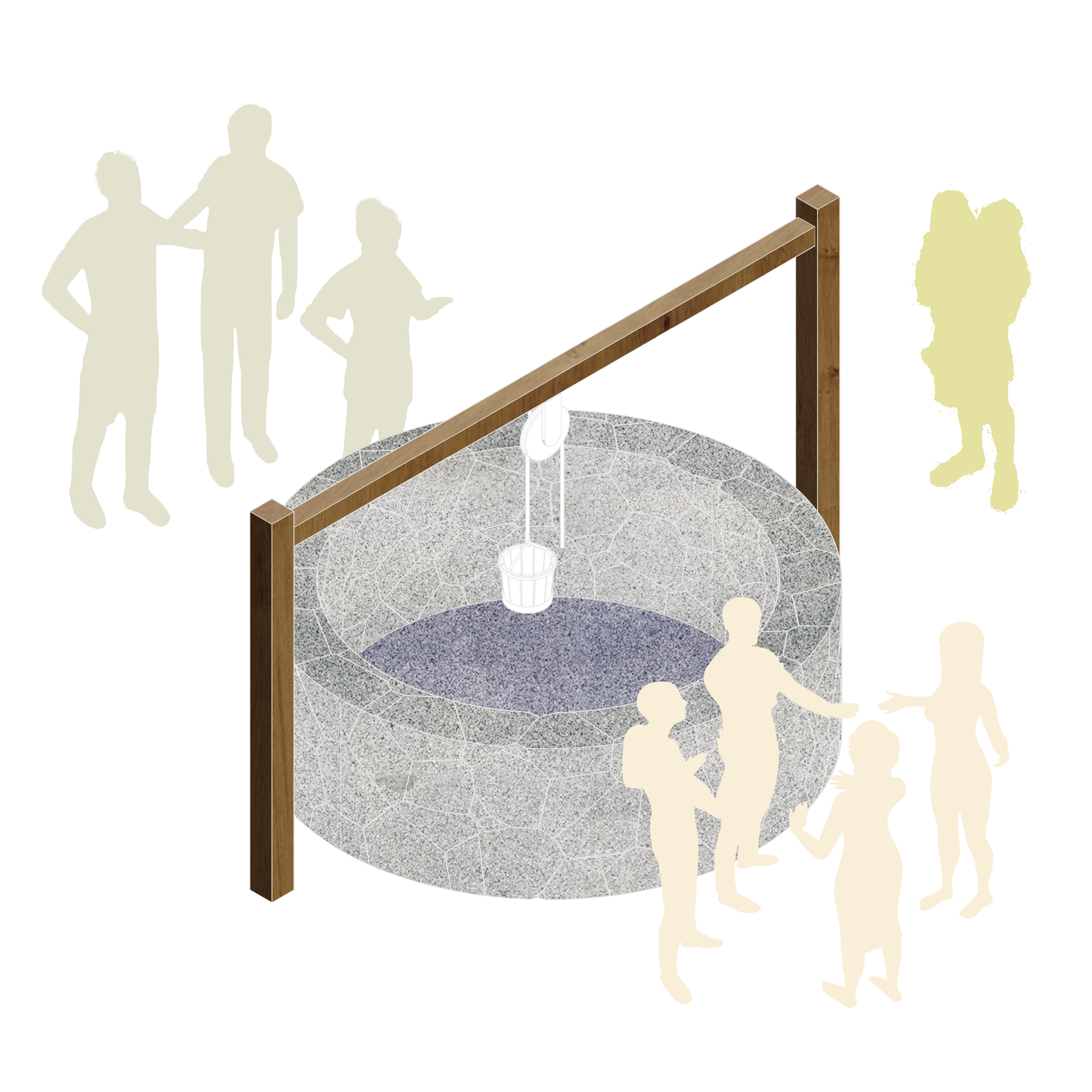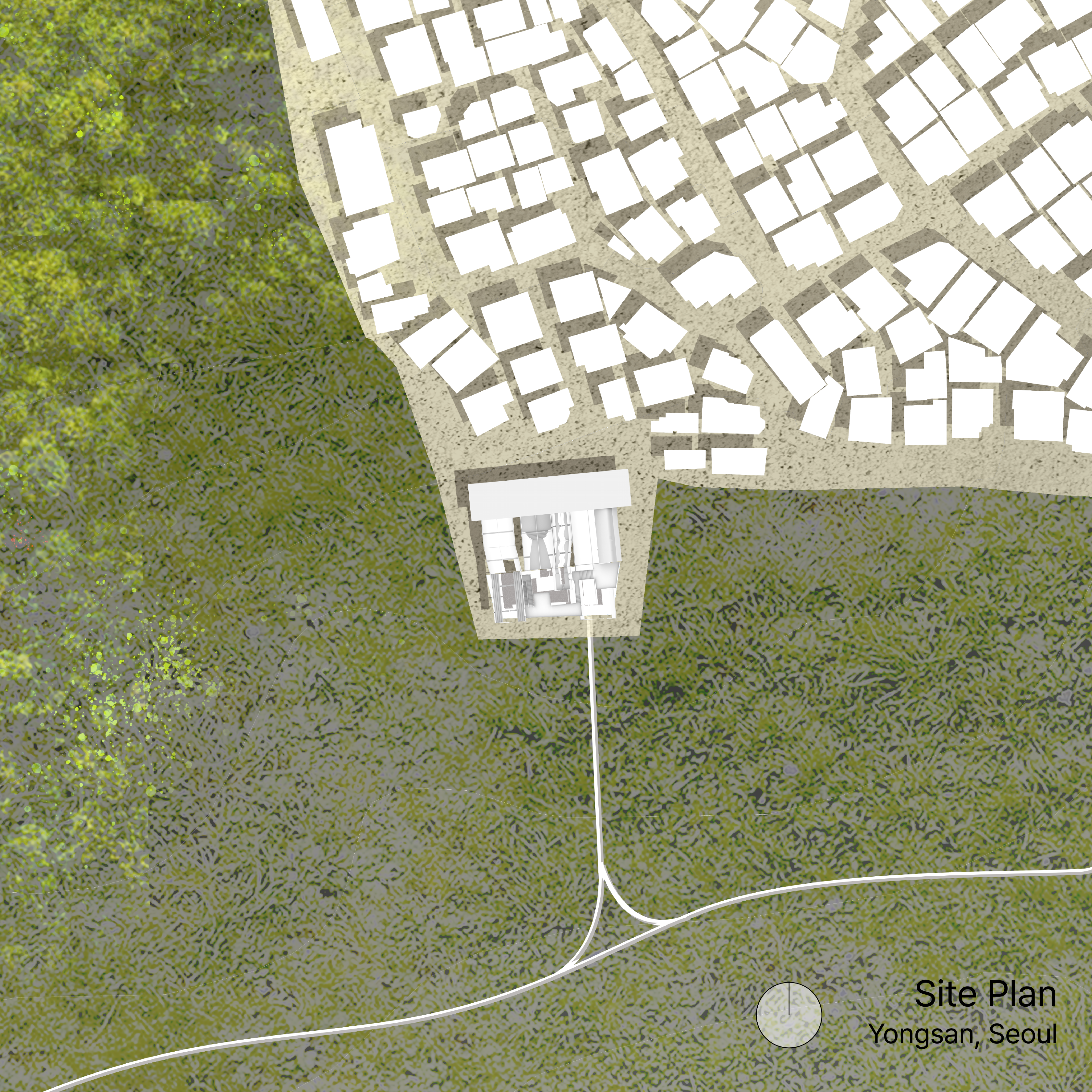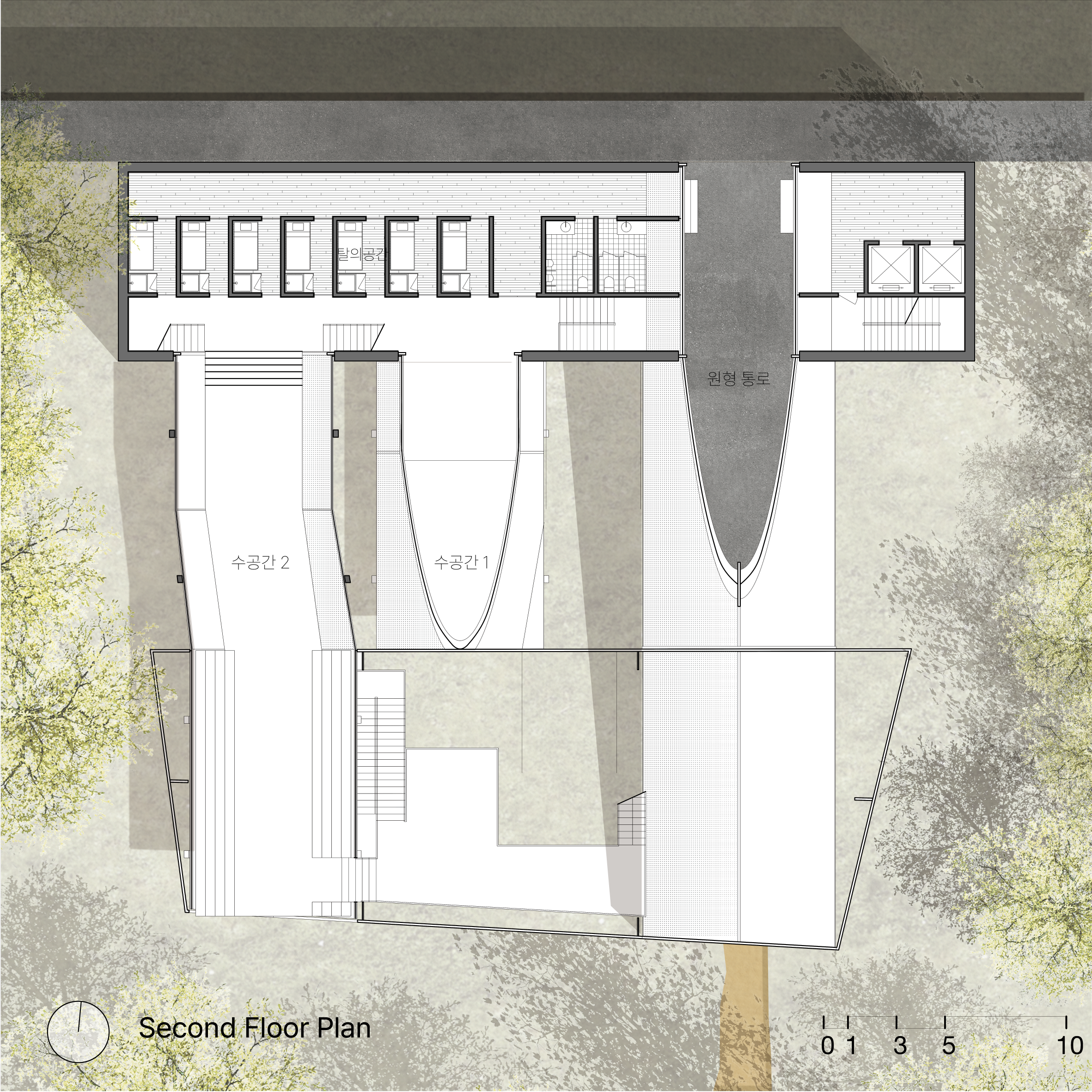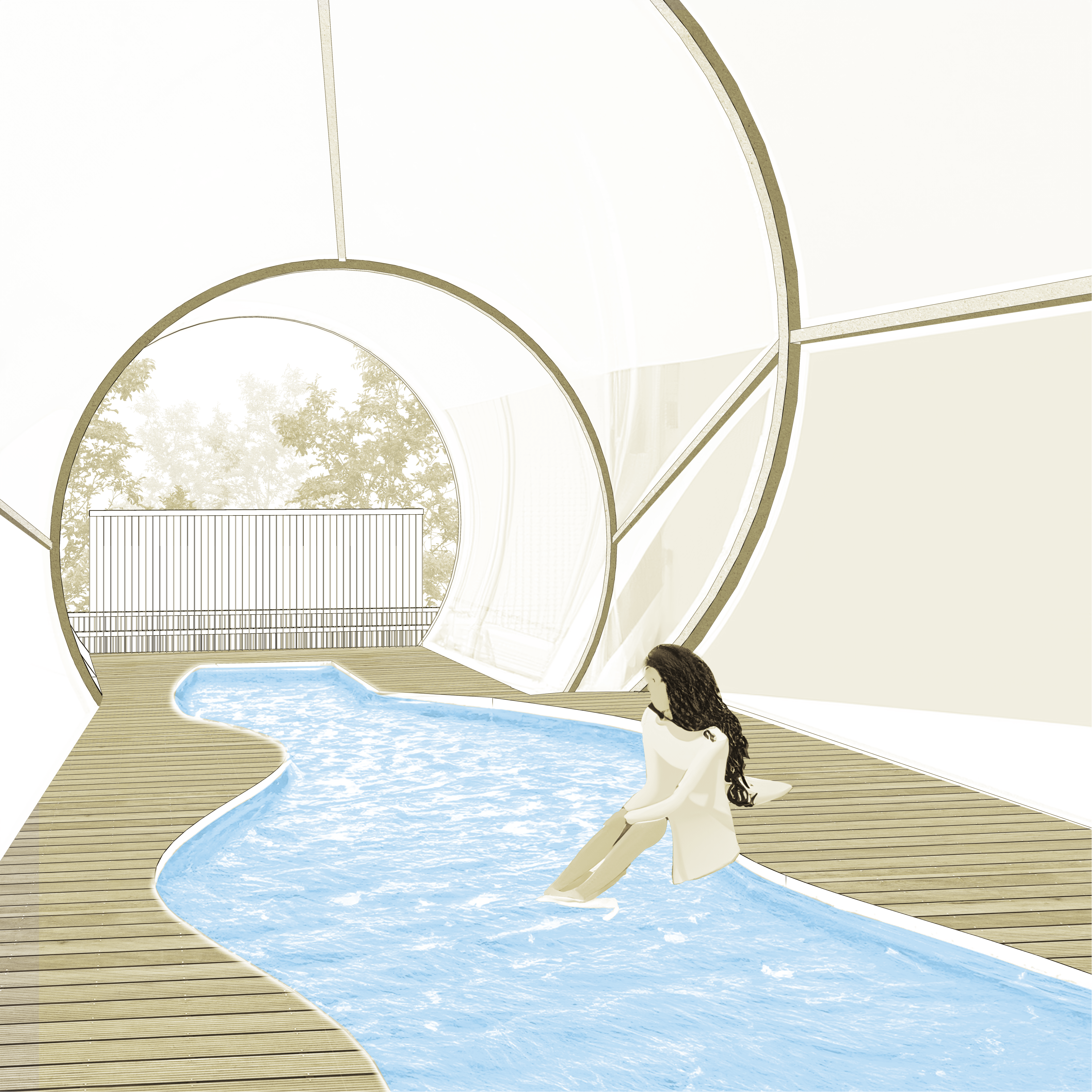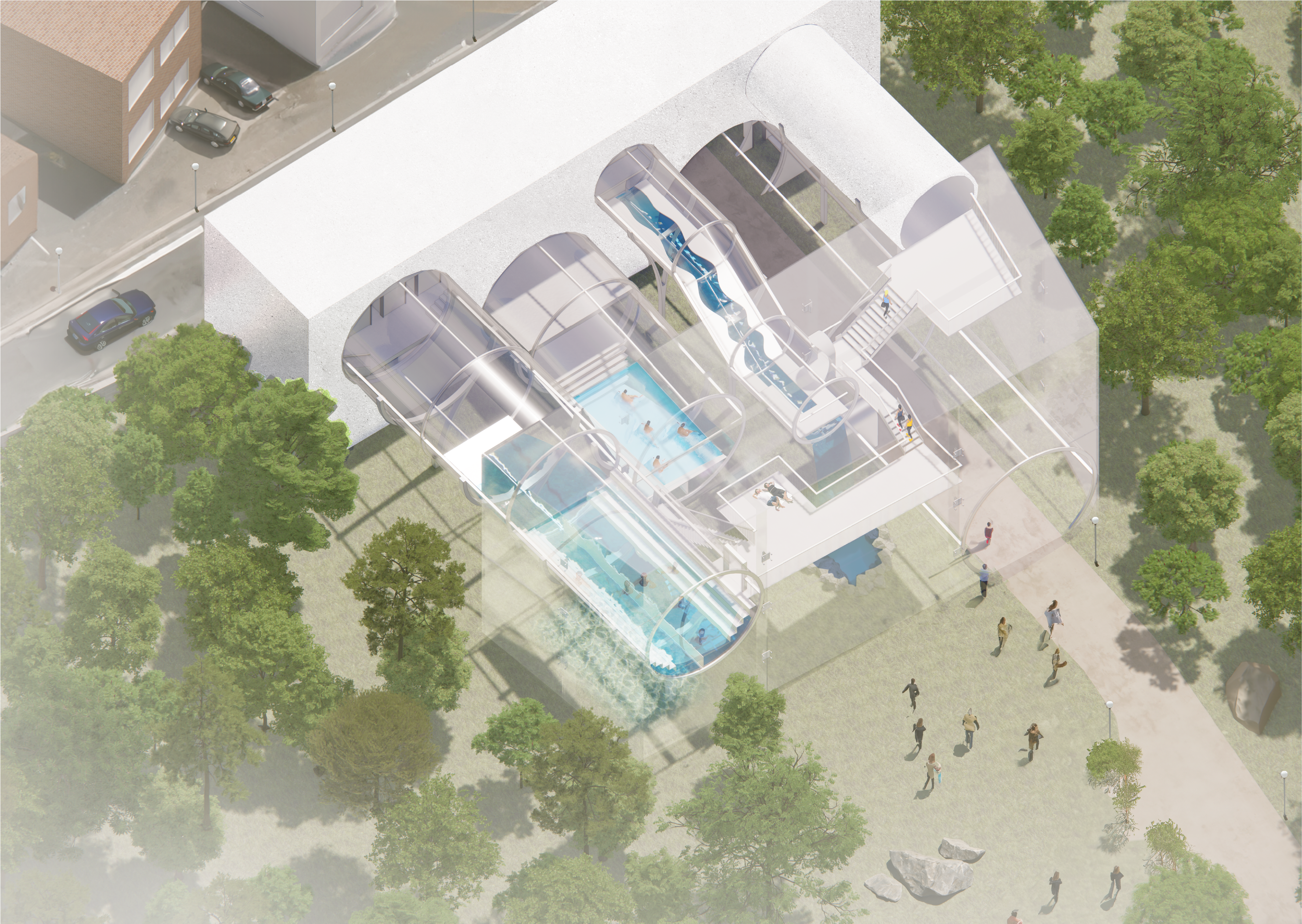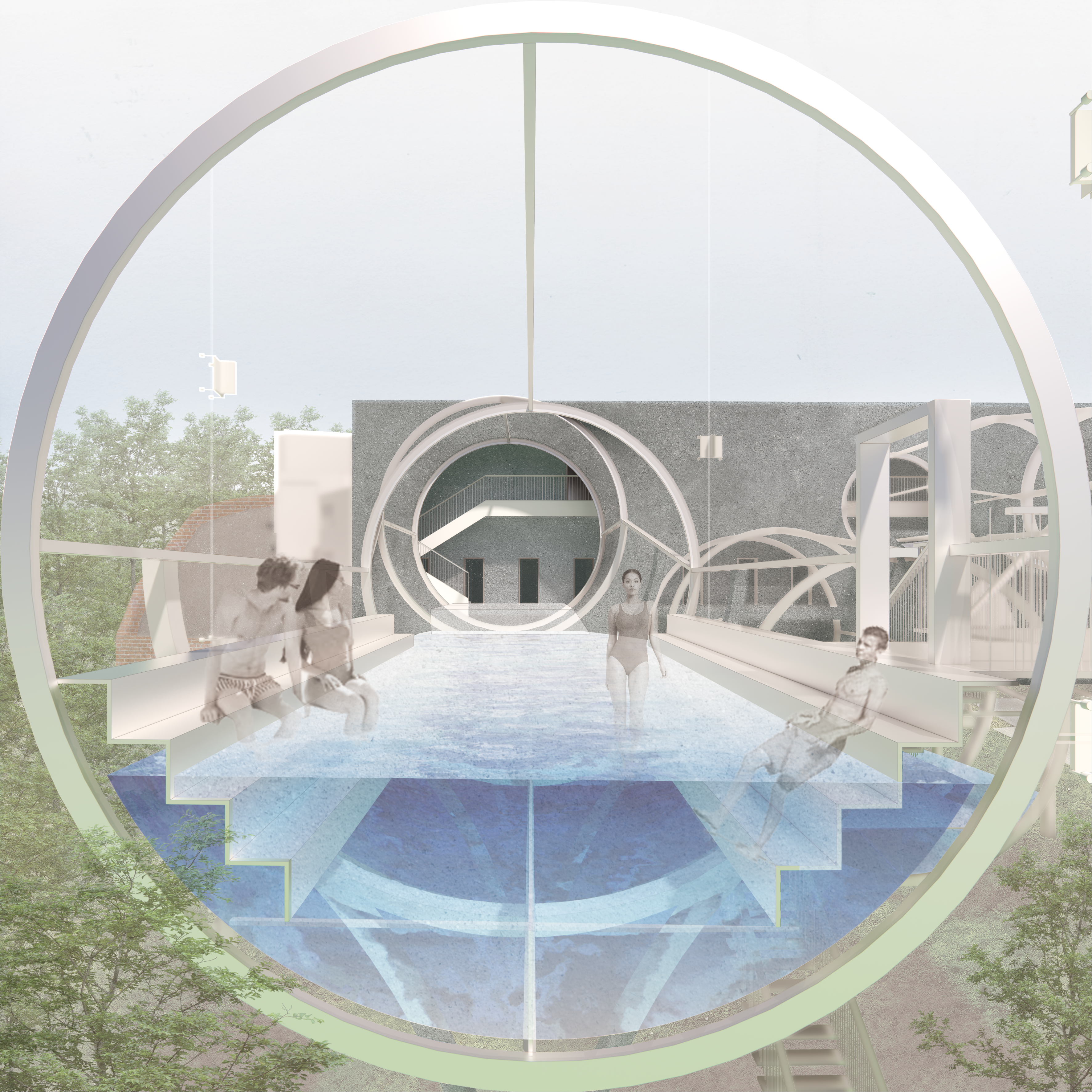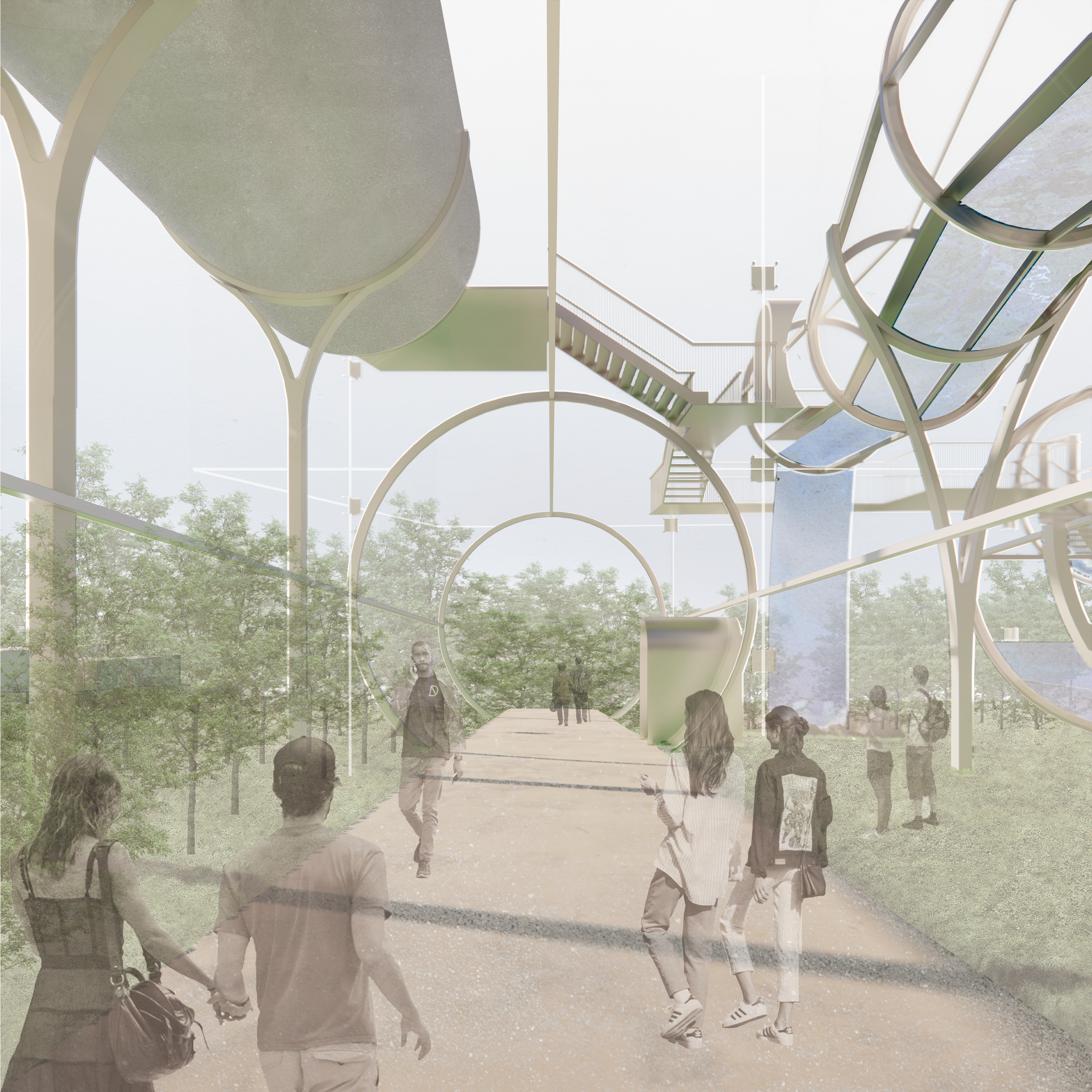김나현_Water Weaves
물은 사람들을 모이게 하고 개인을 공동체로 연결하는 효과가 있다.
과거 우물가에 물을 뜨러 사람들이 모이면서 이웃간의 자연스러운 관계가 형성되었다. 하지만 도시 속의 물은 1900년대 토지의 효율적 이용을 위해 시행된 하천복개사업으로 대부분이 지하로 매립되었고, 상하수도의 보급으로 인해 사람들이 물을 이용하는 방식이 개인적으로 바뀌었다. 물가 주위로 모이던 사람들이 하천을 복개하며 도시 속 타인을 우연히 만날 수 있는 도시적 장치가 부족해졌다. 물의 물질적이고 사회적인 특성을 이용해 변화한 사람들의 생활양식에 맞춰 타인과 마주칠 수 있는 새로운 휴게공간을 제안한다.
Water Weaves는 용산공원과 해방촌의 경계에 위치한다. 용산은 여러 국적의 외국인과 성 정체성, 나이대 등 다양한 개인이 살고있는 곳이다. 각기 다른 정체성과 개성을 지닌 사람들의 동네에 이웃과 마주칠 수 있는 접점을 만들며 다양한 개인을 연결한다. 용산공원은 100여년 동안 담장과 철조망으로 폐쇄된 공간이었다. 용산공원의 개방에 더불어 단절되었던 주거지와 공원을 연결하고자 한다.
물의 흐르는 특성을 공간에 적용하기 위해 원형의 파이프와 다양한 높이차를 이용했다. 원형의 파이프는 사각형과 달리 물을 남김없이 흐를 수 있게하는 효율적인 형태이다. 파이프의 높이차로 인해 흐르는 물의 속도가 달라지며 물이 담긴 공간의 사람들의 행위가 달라진다. 떨어지는 물에서는 바람을 느끼며 전망하고, 느린 물에서는 물소리를 들으며 잠쉬 쉬어간다. 고여있는물에서는 몸을 담구며 휴식을 취한다.
Water makes people gather and connects individuals into a community. In the past, people gathered around wells to fetch water, naturally forming relationships with their neighbors. However, in cities, most bodies of water were buried underground due to river covering projects implemented in the 1900s for efficient land use. Additionally, with the widespread availability of water and sewage systems, the way people use water has become more individual. As rivers were covered, urban environments lost spaces where people could casually encounter one another. By leveraging the material and social characteristics of water, we propose new rest areas that facilitate these spontaneous meetings in alignment with modern lifestyles.
Water Weaves is located on the boundary between Yongsan Park and Haebangchon. Yongsan is home to people of various nationalities, gender identities, and age groups, each with their own unique identities and personalities. This project aims to create points of contact where neighbors can meet, connecting the diverse individuals living in this area. Yongsan Park was a closed space for over a hundred years, surrounded by walls and barbed wire. With the opening of Yongsan Park, we seek to reconnect the previously isolated residential area with the park.
To apply the flowing characteristics of water to the space, we used circular pipes and various height differences. Unlike square shapes, circular pipes efficiently allow water to flow completely without stagnation. The height differences in the pipes change the speed of the flowing water, which in turn alters the activities of people in these water-filled spaces. In areas where water falls, people can enjoy the breeze and the view. In areas with slow-moving water, people can rest and listen to the sound of water. In areas with still water, people can immerse themselves and relax.
